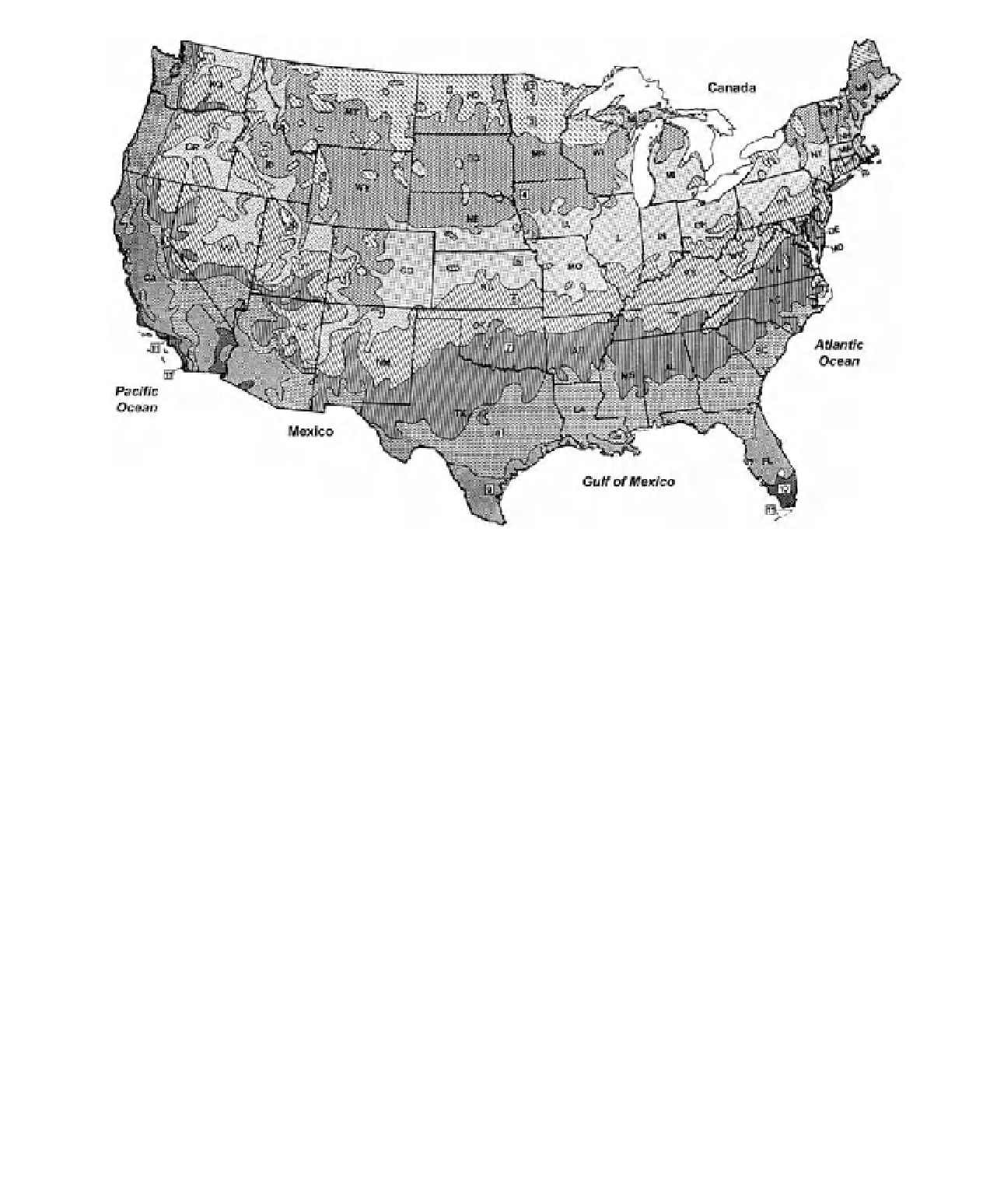Geoscience Reference
In-Depth Information
Figure 6-33.
Portion of the
USDA Plant Hardiness Zone Map
for the coterminous United States, edition of 1990;
see Table 6-4 for zone values. These zones are based on average minimum temperatures for the 1970s and 1980s.
These zones were revised southward from the previous map of 1965, because of colder winter conditions.
gardening, the plant's natural herbivores are
usually left behind, which may allow the plant
to l ourish unchecked. Wetlands have many
such invasive plants. Selected invasive hydro-
phytes are described below for the United States
(based on National Invasive Species Information
Center 2010). Other invasive wetland plants and
animals are discussed elsewhere in this topic.
Purple loosestrife
(
Lythrum salicaria
) -
Purple loosestrife was introduced from Europe
in the ballast of early ships and has now spread
across substantial portions of southeastern
Canada and the eastern United States (Lahring
2003). It is a shoreline plant that grows up to
2 m tall and displays showy purple spikes (Fig.
6-34). It produces seeds prolii cally, is difi cult
to eradicate, spreads rapidly, and has almost no
value for food or shelter by native wildlife. In
marshes, purple loosestrife may form dense
coverage that crowds out native plants and
destroys wildlife habitat. It is considered “the
worst of all plant pests in American wetlands”
(Whitley et al. 1999).
Common reed
(
Phragmites australis
) - This
is a tall perennial grass that resembles bamboo
and is common in temperate and tropical wet-
lands around the world. It is native to North
America, but more invasive strains were intro-
duced from Europe in the late 1800s. It forms
dense colonies that spread by rhizomes or seeds
along shorelines and emergent zones in fresh or
brackish water. It does provide shelter and food
for wildlife; people have used it for food and
building materials, and it is excellent for waste-
water treatment (Lahring 2003). Nonetheless, the
common reed is taking over many wetlands,
particularly in New England states (Fig. 6-35).
Eurasian water milfoil
(
Myriophyllum spica-
tum
) - Native to Eurasia and northern Africa,
this plant was introduced in the United States
around 1900 and is commonly used in the
aquarium trade. It readily outcompetes native




